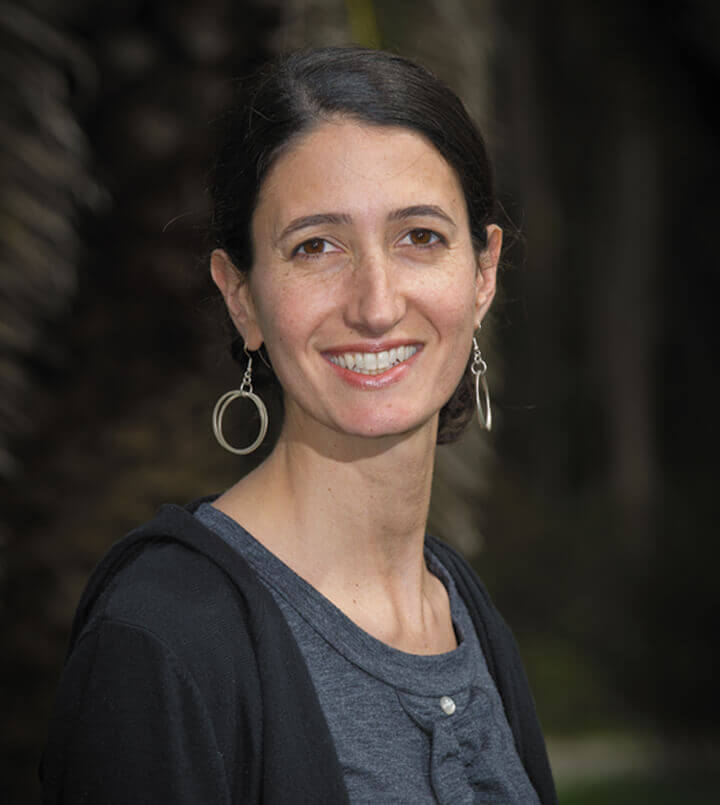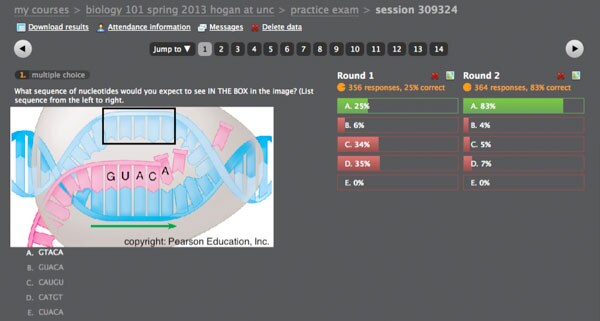Getting the classroom buzzing with team-based assessment

Kelly Hogan
Senior Lecturer & Advisor, Biology Department University of North Carolina
The variety of question types is what drew me to Learning Catalytics. I first piloted Learning Catalytics in my non-majors Biology class of over 400 students in the fall. I started slow by copying clicker questions that I had used for many semesters into the multiple choice format, and then moved onto using the "many choice" format. With "many choice", students have to be more confident in themselves, since there are options for several correct answers or none at all.
I began to experiment with more question types and moved on to the "image upload" format: I asked my students to draw models, take pictures of their models with their laptop or phone, and submit. It was fun for me to see their drawings and for us to evaluate some of them in class discussion. Even though I later realized that I could have used the "sketch" question format, I appreciated the freedom and creativity that the image upload affords the students.
I particularly like that Learning Catalytics holds every student accountable. I often employed active learning in class through notecards, group work, taking pictures of a few students' work and displaying it via the document reader. However, not all students did the work! In contrast, with LC, all students have to submit something to get their participation credit. It was an epiphany for me to see every student working, without me having to run around the large, steep lecture hall.
The part of the program that has really blown me away is the Team-Based Assessment. I made a practice exam for students consisting of 12 questions and the students worked individually for about 15 minutes and then in a team for about 10 minutes. (I pulled many questions from the question bank, from Georgia Tech's Jung Choi.)
The classroom was buzzing with noise during the team component, and the students hardly needed any direction from me about what a team-based assessment entailed. Students enjoyed it, and it was thrilling for me to see how students were answering my exam questions in real time! By examining the real-time display, I knew which questions I would want to spend time discussing in the 10 minutes I had at the end of class. The screenshot shows the gains students made by talking with each other. In this particular question that I wrote, students were quite unsure of the answer individually, yet after talking with their team, they made huge gains. In fact, the students made gains on every question as a group compared to individual answers.
When I asked the 350+ students present if they learned a lot with the team-based quiz, they emphatically and rapidly yelled "YES!" to me. There is no doubt this will become a regular part of my assessment of students.
Learn about Kelly’s active learning research and its effects on black and first-generation college students (Written by Richard Pérez-Peña, The New York Times, September 24, 2014)
Read how Kelly incorporates active learning into introductory biology classes at UNC–Chapel Hill (Article: Not Just Research, Inside Higher Ed, August 20, 2015)

See what Kelly’s students say about LC
(Video produced by Paris Alston, University of North Carolina at Chapel Hill, Class of 2016)
 Play
Play